One of the lutieri's favorite species is the mountain spruce. And not just for its outstanding acoustic properties, but also for its light color and fine, wavy fibers that give it a silky appearance. Pruning and growth defects also contribute to the natural drawing special and unique. It is commonly called the singing paltin and the mystically inclined believe it can connect with the spirit world. In our mountains grow some of the most prized specimens for their distinctive sound. For these and other interesting reasons, the following article is dedicated to the paltin.
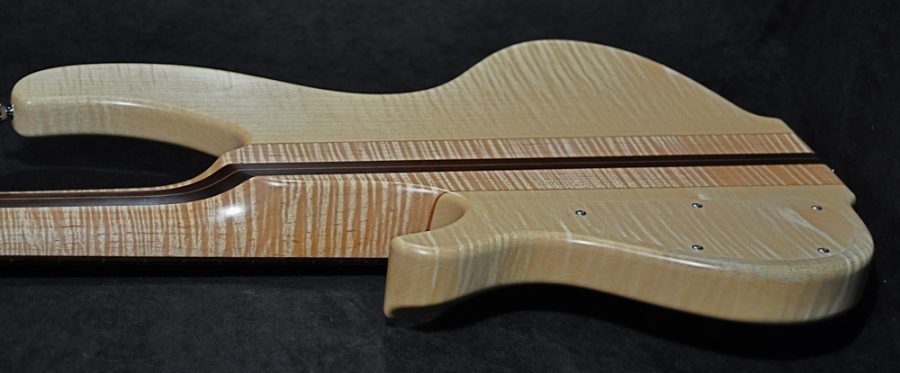
Robin Hood's tree
The best-known specimen of the mountain rose is in England and has played in the movie alongside Kevin Costner in Robin Hood - Prince of Thieves. There's a famous sequence there of a lone paltin between two hills. It's the most photographed tree in England and stands near Hadrian's Wall near Crag Lough in Northumberland. It's several hundred years old and has had other siblings that have disappeared over the years. He has also appeared in Bryan Adams' music video (Everything I do, I do it for you), as well as in a couple of TV shows. In May 2003 she was again heroa helicopter crashed not 100 feet away.
In 2016 it was nominated for the Tree of the Year competition in England, alongside 200 other trees. It won the competition and thus participated in the 2017 competition European Tree where he came 5th. First place in England earned him a prize of £1000 used to analyze his health and to protect his roots, increasingly exposed by the many visits.

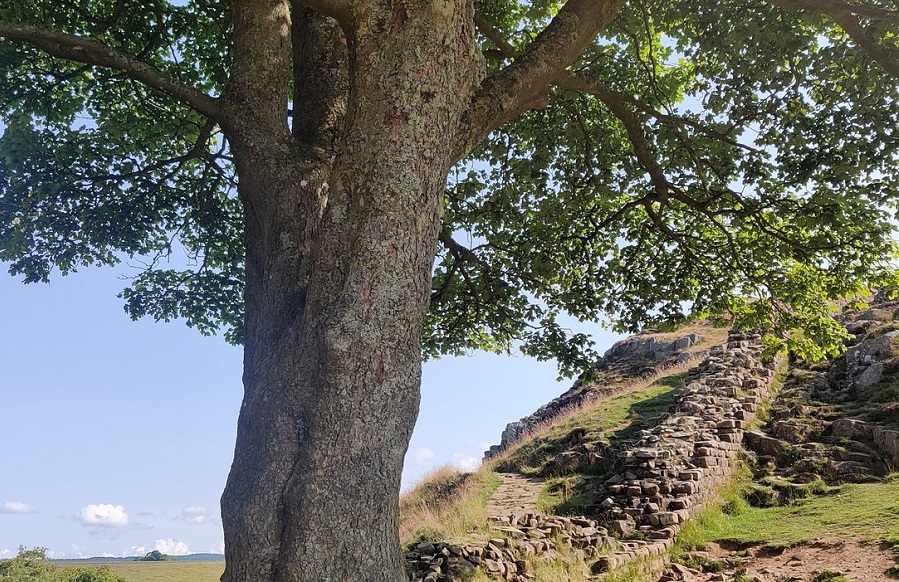
From the maple family, but also similar to the plane tree
The Latin name for mountain rose is Acer pseudoplatanus. Part of the family Sapindaceaelike Acer, just like maple. Incidentally, maple also known as the field rose (Acer platanoidesIn the specialized literature you can find the mountain rose under the names sycamore maple or European sycamore (English), mountain steel (Italian), sycamore maple (French) or bergahorne (German).
Palms are native to central and eastern Europe and western Asia, and in the 15th-16th centuries they reached the north of the continent, brought to England by the French. By 1700-1800 it was acclimatized in Sweden, and after 1800 it reached the USA. It has adapted well to these areas and is now considered invasive in some parts. In Romania it grows in hilly and mountainous areas, reaching altitudes of 1500-1600 m.
Palm is a deciduous tree that grows 30-40 m tall, sometimes up to 50 m, with a diameter of 1-1.2 m. The roots are strong and deeply embedded in the ground. The stem is straight and short, with smooth gray bark when young. After 30-40 years, the bark begins to thicken, develop cracks and exfoliate into irregular plates, like the sycamore. The crown is broad and irregular. The leaves are large (12-20 cm), palmate-lobed, toothed, with narrow, pointed sinuses. The back of the leaf is matt and hairy at first, the back of the leaf being one of the ways of distinguishing the palmetin from the maple, which has a glossy back. The flowers appear after flowering and are yellowish-green, clustered in hanging clusters. The fruits are disamate with 3-6 cm wings united in a pointed unchia.
Palm grows fast in the first part of its life, at 30 years it is similar to beech at 60. After 30 years, the fruits appear and are easily scattered by the wind. It typically lives to 400-500 years, but there are specimens that live well beyond this age.
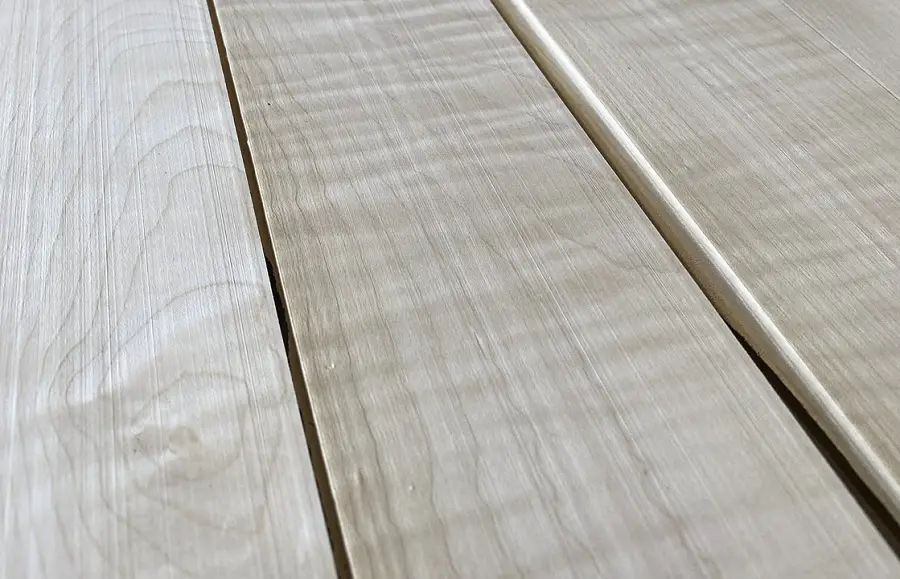
Pine wood: properties, characteristics
Rosewood is one of the few species where sapwood is used. In cross-section the difference between sapwood and heartwood is not always visible. The sapwood area is wide, the color ranging from yellowish-white to cream to golden brown or reddish. The heartwood is darker reddish brown. The annual rings are visible. The fiber is fine, uniform and straight. The most popular, however, are specimens where the fiber is wavy, sometimes very pronounced. This type of rose is also called curly rose. The pores are diffuse, numerous, sometimes radially arranged. The medullary rays are visible to the naked eye, they are both narrow and wide, normally spaced. It is they that give the natural luster specific to the palatine. The radial cut highlights the medullary rays.
Paltin is the wood whose defects are actually qualities. In addition to wavy and curly grain, the wood may contain small knots which, depending on the cut, can give the veneer a special appearance (bird's eye, peacock's tail).
The density of anhydrous rosewood is 615 kg/³ and the hardness of Janka 4680 N. To preserve its light creamy-white color, it is recommended to cut the tree in winter, cut it immediately and dry it in a kiln. Otherwise the wood may stain with its own sap. Work well with both hand and power tools. It is recommended to use sharp tools and not too fast a speed so as not to burn the wood. It is turned, carved and glued well. It is a good idea to apply a sealer before grouting as it tends to stain. If it is finished clear without staining, it tends to yellow over time.
It is not resistant to the outside and moisture. This is understandable given the use of sapwood, with no outdoor resistance.
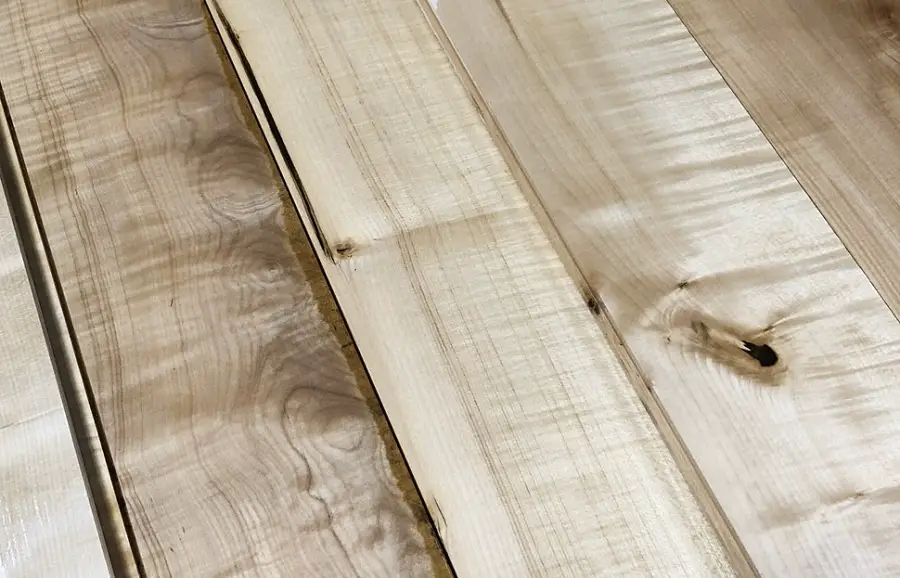
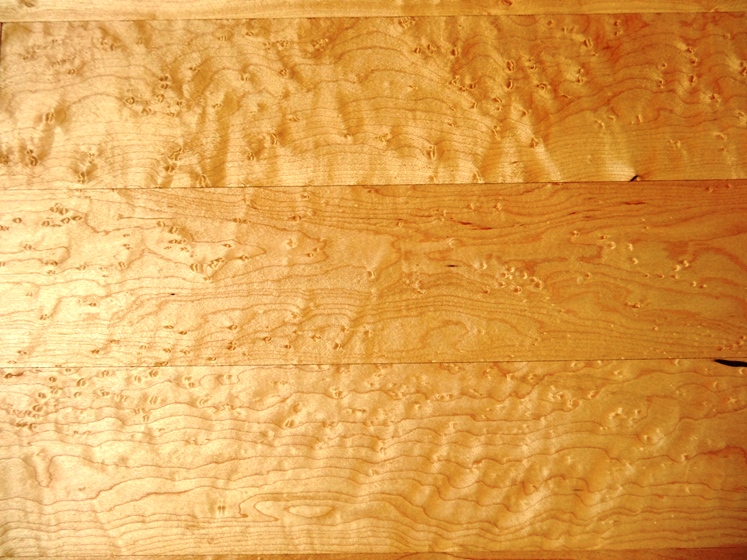
Romanian Paltin learn to sing la Reghin
Rosewood is used to make furniture, decorative objects or boxes. It is a popular raw material for aesthetic veneers. The distinctive design of the veneer is often used to decorate luxury cars or yachts. Thanks to its light color it is used for inlays. Paltin is used to make bowls, spoons and other kitchen utensils. It is also a very good firewood and raw material for making paper.
However, the most important use of rosewood is for musical instruments (violins, cellos, violas). From this point of view, it is a pedigreed species appreciated by European master luthiers. It is mainly used to make the backs, sides and necks of instruments. The most prized is the wavy-grained rosewood for its great visual effect. However, it is not only aesthetically pleasing but also has the ability to propagate sound. Wood with narrow annular rings is used for high-pitched sounds (violins) and wood with wide annular rings for low-pitched sounds (cello, double bass). It also has the ability to enhance sounds, giving them clarity. At the Hora musical instrument factory in Reghin, Romania, they work with Romanian paltin, which has outstanding qualities. Find out more about Hora and the instruments made there here.
Find out more about the link between the appearance of rosewood and its acoustic and elastic properties here a detailed study by a team of Romanian professors and researchers. One of the conclusions establishes the link between the waviness of the fiber and the wavelength of the sound. A fiber with pronounced waviness will have a lower wavelength, and with more discrete waviness, the wavelength will be longer.
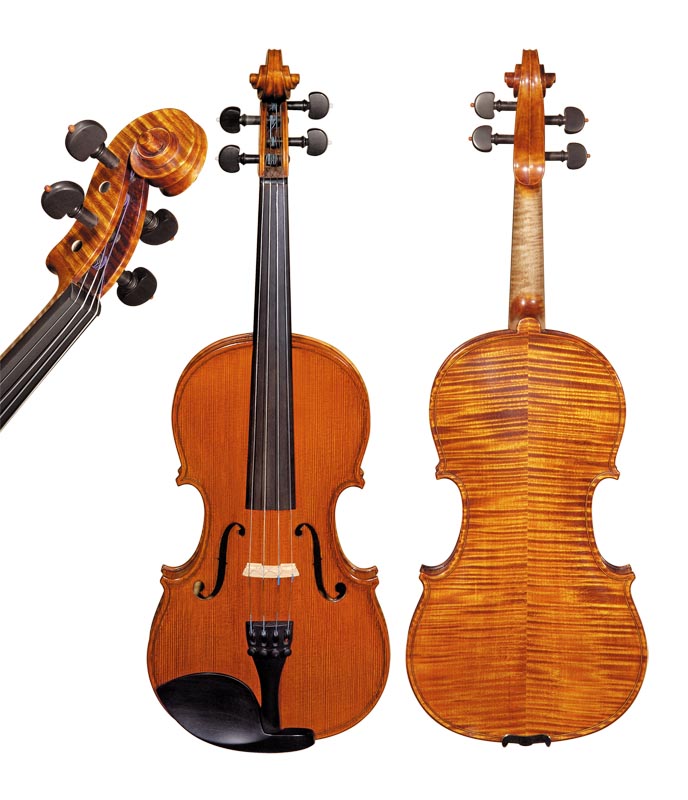
I somehow feel a sentimental attachment to this species because it triggered my passion for wood. In the first 2-3 weeks of my employment at ICPIL (Institute of Research and Design for the Wood Industry) I saw some samples of wood with a glossy varnish applied to it, which emphasized the natural design. The samples were for a colleague's work and I thought I had never seen anything more beautiful. The most beautiful of them were the ones made with curly and sanded rosewood veneer.
I hope you find the above information useful. As always, additions are welcome. And if you have any questions or queries, please leave them below in the dedicated space. I'll be sure to reply.

































The hardware is so fine and exquisite. where it can be found, from which manufacturer????
The one that is mounted on this furniture I don't know where it can be found.
You can find antique hardware here: http://www.feroshop.ro, http://www.luxfer.ro, blog.gelutrade.com.
I'm getting more and more passionate about woodworking, gradually trying to buy tools, watching youtube, reading sites like this one. I don't make a living out of it, it's just a hobby.
But , I don't want to be misunderstood, but articles like this make me feel even more confused.
WHERE can I find wood in Romania???
My biggest frustration as a novice amateur is access to wood essences.
I have neither money nor what to do with cubic metres of walnut, fir, oak etc.
At building and DIY stores you get 90% spruce and fir and the rest oak and beech ONLY as treads, risers and balusters for stairs. ATAT.
Where can I find hardwood by the piece?
The second frustration is traditional tools. You can't find real chisels and rulers in the trade. Just cheap, stupid, unsharpened, bad steel stuff that doesn't sharpen or melts after 10 minutes.
So interesting article, decorated with outside images. What about us?
I completely understand your frustration because I'm also struggling with the same thing. I use outside images because I can hardly find them here. That's what we're trying to do with the magazine. To revive the tradition of DIY woodworking, to have new information, in Romanian, about wood essences, technologies, etc. Slowly things are starting to move and it won't be long before there will be specialty stores with special wood, where you can buy small quantities. If you've read the DIY articles you've seen some of the tools we use for our projects. Some of them were taken from the flea market in Bucharest. Maybe it will help you to find the necessary tools.
I wish you success!
Wood to board you can get from Holver http://www.holver.ro/They're expensive and they'll fuss if you just take a piece but they don't refuse. Otherwise you can find some at every local forestry office - logs or cut wood. Alternatively you can cut yourself with a chainsaw what you find at your friend's or relative's house, or what is already fallen.
Good tools in Romania sell http://www.finetools.ro/ or Europe - https://www.fine-tools.com/ or https://www.dictum.com/en/.
Hello! You have mixed several species of wood that are also visibly different even in the proposed pictures. You have mixed sycamore maple (Acer pseudoplatanus) with different forms of maple in the pictures - they seem to be Acer saccharum Sugar Maple (the one used to make syrup) and Bigleaf Maple Acer macrophyllum or even a picture of American sycamore Platanus occidentalis. Local and regional names and the mixing of species names with morphological variant names for the same species are the reasons why it is good to use Latin names. Otherwise you waste an opportunity to clarify the situation and promote a correct use of the different wood species.
Thank you for the clarification. Your suggestion to use the Latin name to better identify the species is very helpful. I will make the necessary changes.
Congratulations for the article, but I have a question. As far as I have heard, the rosewood is only used in musical instruments as an aesthetic "bottom" part, not for resonance. The small, regular annual rings you refer to are those of the spruce?
The curly palisander is also a resonant wood. It is used to make stringed instruments (violin, viola, cello), but I've also read about rattles made from rosewood. In Hora-Reghin, we also use hollow palint wood.
Thanks for your appreciation.
All the best.
For years I've been looking for information about the paltin wood that I knew in my youth at CPL Arad, where I used this wood for carving. Unfortunately no one knows this species, but at one time I met someone who is a forestry engineer and to my surprise he claimed that the paltin is the same as the maple. Can you confirm this?
And it would be very useful to put a picture of the living tree you are describing.
Thank you very much!